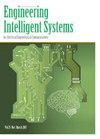ARCHON: framework for intelligent cooperation
Engineering Intelligent Systems for Electrical Engineering and Communications
Pub Date : 1994-12-01
DOI:10.1049/ISE.1994.0018
引用次数: 60
Abstract
The paper describes the work that has taken place in the ARCHON Project, ESPRIT project P-2256. The consortium has developed a general-purpose architecture, which can be used to facilitate cooperative problem-solving in industrial applications. The paper describes the need for a multiple agent approach for industrial applications, outlines the benefits which can be accrued by adopting this paradigm, and describes the key difficulties which must be faced when building a multi-agent system in this domain. Details of the ARCHON architecture are presented, including a description of the main functional components and their realisation in a hybrid agent model. An example of cooperative fault diagnosis in an electricity management application is described in order to provide a clear illustration of the working of the ARCHON architecture, and to provide a concrete example of the potential benefits of a multi-agent approach. >执政官:智能合作的框架
本文描述了在执政官项目,ESPRIT项目P-2256中进行的工作。该联盟开发了一种通用架构,可用于促进工业应用中的协作解决问题。本文描述了工业应用中对多智能体方法的需求,概述了采用该范式可以积累的好处,并描述了在该领域构建多智能体系统时必须面对的主要困难。介绍了ARCHON体系结构的细节,包括主要功能组件的描述及其在混合代理模型中的实现。为了清楚地说明ARCHON架构的工作原理,并提供多智能体方法潜在好处的具体示例,本文描述了一个电力管理应用程序中的协同故障诊断示例。>
本文章由计算机程序翻译,如有差异,请以英文原文为准。
求助全文
约1分钟内获得全文
求助全文

 求助内容:
求助内容: 应助结果提醒方式:
应助结果提醒方式:


